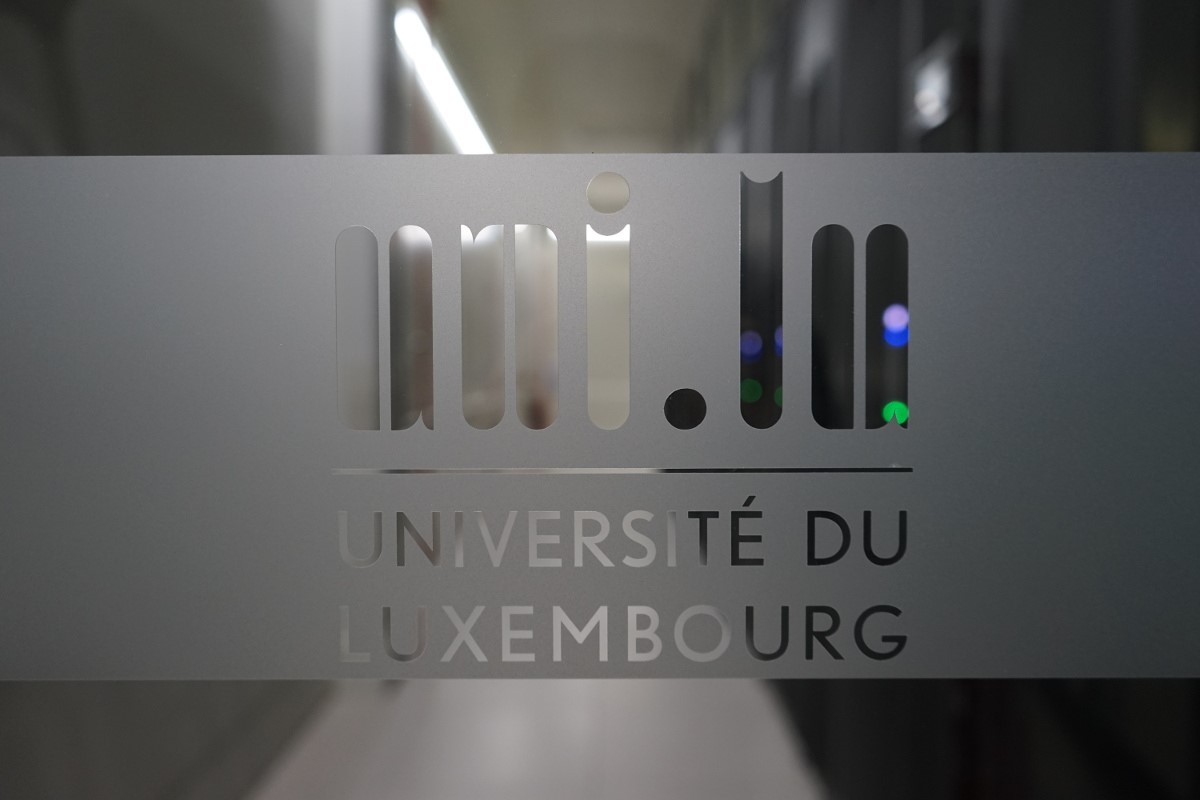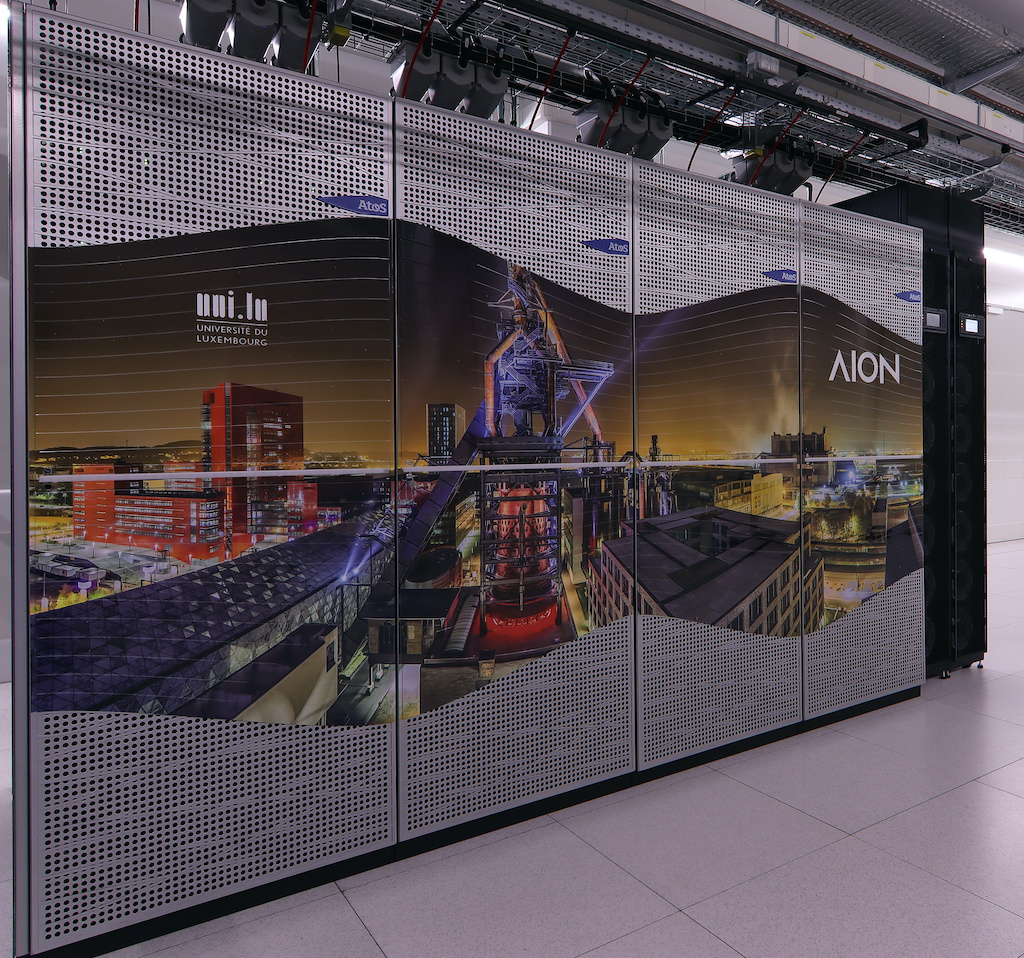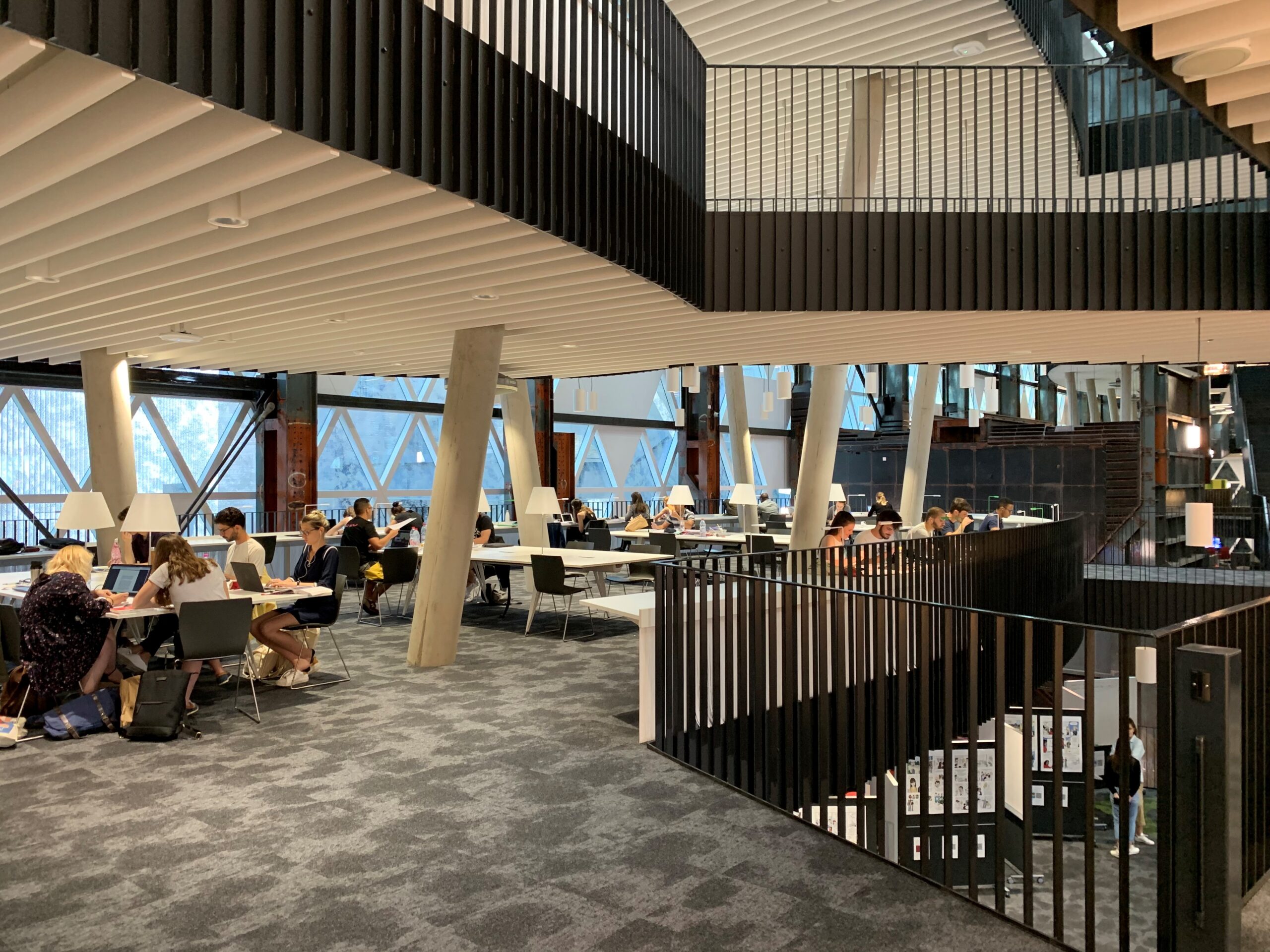Core facilities
As a research-centred university, the University of Luxembourg hosts state-of-the-art research equipment, laboratories and supercomputers and is home to an outstanding academic library, the Luxembourg Learning Centre. This infrastructure is constantly expanding, both on our main campus in Belval, a former steel industry site in southern Luxembourg, and on our Kirchberg Campus in Luxembourg City, close to EU and financial institutions.
-

High-performance computing (HPC)
The University of Luxembourg’s large academic HPC facility represents a cutting-edge research infrastructure for public research in Luxembourg while serving as an edge-access solution to the Euro-HPC Luxembourg supercomputer.
-

Supercomputers
Our current production systems are Iris (Rpeak=1071 TFLOPS) and Aion (Rpeak=1884 TFLOPS), which share the same high-performance storage solutions.
-

Luxembourg Learning Centre (LLC)
The LLC houses a state-of-the-art university library, a stimulating learning environment that supports students and researchers by offering training and services.
Facilities in our faculties and interdisciplinary centres
-
LunaLab
The LunaLab is one of the few facilities in the world that simulates lunar conditions to test applications such as autonomous navigation of lunar robots, multi-robot interaction, lunar surface extraction, manipulation and transportation, additive manufacturing and regolith analysis.
-
CubeSatLab
CubeSats are the catalysts of the NewSpace industry. Thanks to the countless applications they lend themselves to, and their reduced cost, these nanosatellites have spurred a new space race. In this lab, Interdisciplinary Space Master students can design, develop, and test their own custom nanosatellites.
-
Concurrent Design Facility
Concurrent engineering is replacing traditional sequential design. Instead of having engineers work on their own in consecutive steps on a project, concurrent engineering calls for a collaborative and agile approach. Engineers use connected workstations and a flexible lab design that can be adapted to different applications such as space system design, strategic forecasting, space architecture and feasibility studies.
-
Zero-G Lab
A lab to test the movement of in-orbit robotics, satellites and other spacecraft in a micro-gravity environment – similar in concept to an air hockey platform. It enables students and researchers to understand and forecast the behaviour of orbital robotics in space.
-
AeRoLab
A 5x5x5 flight arena comprising a fleet of multicopters and different types of sensors. This lab is also equipped with a motion capture system that can be used to test, evaluate and validate autonomous navigation approaches to perception, state estimation, control and trajectory planning. This is a cooperation between SnT and the Faculty of Science, Technology and Medicine at the University of Luxembourg.
-
360Lab
Luxembourg’s first thematic research laboratory focusing on smart mobility. 360Lab serves as an umbrella facility for research projects making use of the same equipment and complementary expertise with the aim of conducting strategic and collaborative research in the broader area of mobility innovation.
-
CommLab
The CommLab is used for research and testing of both satellite and terrestrial communication systems. Activities carried out at this facility are mostly focused on wireless communication systems to test and validate digital signal processing algorithms while also tackling real-life implementation issues and constraints.
-
Computer Vision Lab
This lab provides state-of-the-art facilities for controlled measurements, testing and validation, all of which are essential to support experimental research in computer vision and imaging. Research activities are focused on 3D sensing and analysis, with applications ranging from security to assistive computer vision for healthcare.
-
Radar Lab
The Radar Lab focuses on the implementation of optimised signal processing strategies for modern radar systems. It also demonstrates how radar systems are being used in new ways, such as for contactless vital sign monitoring and integrated radar and communications systems.
-
6GSpaceLab
The 6GSpaceLab gives researchers and students the opportunity to test and validate their algorithms in conditions that reflect the challenges and constraints of real-world communications platforms. It explores research topics such as precoded downlink beams, ISL data/payload synchronisation and DVB-S2/5G NR communication standards.
Cutting across disciplines, from neurosciences to data science and from immunology to microbiology, the LCSB makes use of a variety of different technologies and models. The aim of the LCSB’s platforms and facilities is to ensure that important resources are easily available to all research groups. They also offer fee-based customised services to external users at national and international level. The existing facilities contain state-of-the-art equipment in the fields of sequencing and single-cell analysis, metabolomics, animal research, bioinformatics, bioimaging and high-throughput screening.
-
SimUL
Our medical simulation unit, SimUL, offers state-of-the-art equipment so that students can develop key skills in a protected environment. Our Anatomy Suite is equipped with conventional anatomical models as well as two virtual anatomy tables, enabling anatomical structures to be visualised with a very high level of precision. Our Virtual Hospital Suite, a high-fidelity patient simulator set in a close-to-reality environment is used to develop know-how and communication skills for critical situations.
-
Structural Engineering Laboratory
Buildings and bridge structures today are mostly constructed from concrete, masonry, steel and wood. The purpose of the Structural Engineering Laboratory in the Department of Engineering is to investigate the resistances and load capacities of specific materials and structures. As well as materials evaluation, connections and full-scale structural elements are also tested.
-
Walferdange Underground Laboratory for Geodynamics
The research activities conducted in the Walferdange Underground Laboratory for Geodynamics (WULG) concern gravity and seismology. The laboratories, installed inside an abandoned gypsum mine, are equipped with state-of-the-art gravimeters. These instruments are used by geophysicists to measure mass changes at the surface of the Earth. They are also used by metrologists who are trying to redefine the kilogram in term of energy instead of an artefact.